Table of Contents
Daily Current Affairs for Government Exams:
Today Current Affairs:2nd May 2020 for UPSC IAS exams, State PSC exams, SSC CGL, State SSC, RRB, Railways, Banking Exam & IBPS, etc
Contents:
- Research & Development (R&D) Statistics and Indicators 2019-20 report,
- Kashmir saffron has been given the Geographical Indication (GI) tag
- Kovilpatti kadalai mittai (chikki or sweet made of peanuts and jaggery) has got geographical indication (GI) tag.:
- Forex Reserves:
- Chakma and Hajong communities:
- Demo-2 Mission
- One Nation-One Ration Card scheme
- Bengaluru Bannerghatta Biological Park:
- Central Vista
- Other important current affairs.
1. Research & Development (R&D) Statistics and Indicators 2019-20 report:

According to the Research & Development (R&D) Statistics and Indicators 2019-20 report, India’s gross expenditure in R&D has tripled between 2008 & 2018 and scientific publications have risen placing the country internationally among the top few.
- The R&D Statistics and Indicators 2019-20 is based on the national S&T survey 2018 brought out by the National Science and Technology Management Information (NSTMIS).
- The report on R&D indicators for the nation is an important document for the
- Evidence-based policymaking and planning in higher education,
- R&D activities and support,
- Intellectual property,
- Industrial competitiveness.
Findings of the Report
- According to the report, R&D is driven mainly by the government sector.
- Expenditure on R&D:
- The Gross Expenditure on R&D (GERD) of India nearly tripled between 2007- 08 to 2017-18.
- India’s per capita R&D expenditure has also increased by 1.5 times.
- Increase in Extramural R&D support by central Science & Technology agencies.
- Women’s participation in extramural R&D projects has also increased significantly to 24% in 2016-17 from 13% in 2000-01.
- These extramural expenditures are the expenditures on R&D that is performed abroad but financed by domestic institutions.
- India spent 0.7% of its GDP on R&D in 2017-18, While the same among other developing BRICS countries were Brazil 1.3%, Russian Federation 1.1%, China 2.1%, and South Africa 0.8%.
- Researchers and scientific publications:
- The number of researchers per million populations has doubled since 2000.
- India occupies 3rd rank in terms of the number of Ph.D. awarded in Science and Engineering (S&E) after the USA and China.
- India is placed 3rd among countries in the scientific publications as per the NSF database.
- Patent filing:
- India is ranked at 9th position in terms of Resident Patent Filing activity in the world.
- During 2017-18 out of total patents filed in India, 32% of patents were filed by Indian residents.
- Patent applications filed in India are dominated by disciplines like Mechanical, Chemical, Computer/Electronics, and Communication.
- According to the World Intellectual Property Organisation (WIPO), India’s Patent Office stands at the 7th position among the top 10 Patent Filing Offices in the world.
2. Kashmir saffron has been given the Geographical Indication (GI) tag :
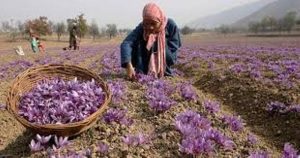
Kashmir saffron, which is cultivated and harvested in the Karewa (highlands) of Jammu and Kashmir, has been given the Geographical Indication (GI) tag by the Geographical Indications Registry.
- The unique characteristics of Kashmir saffron are its longer and thicker stigmas, natural deep-red color, high aroma, bitter flavor, chemical-free processing, and high quantity of crocin (coloring strength), safranal (flavor) and picrocrocin (bitterness).
- It is the only saffron in the world grown at an altitude of 1,600 m to 1,800 m AMSL (above mean sea level).
- The spice is grown in some regions of Kashmir, including Pulwama, Budgam, Kishtwar, and Srinagar.
- Kashmir saffron is a very precious and costly product. Kashmir saffron is renowned globally as a spice.
- It rejuvenates health and is used in cosmetics and for medicinal purposes. It has been associated with traditional Kashmiri cuisine.
3. Kovilpatti kadalai mittai (chikki or sweet made of peanuts and jaggery) has got geographical indication (GI) tag.:

Now, members of the Kovilpatti Regional Kadalai Mittai Manufacturers and Retailers Association, based out of Kovilpatti and some towns and villages in Tuticorin district of Tamil Nadu, will have an exclusive right over the tag.
- The GI tag has been granted to the groundnut sweet by the Geographical Indications Registry recognizing the uniqueness of the ingredients used for its manufacture procured from the geographical area of Kovilpatti.
- The ingredients include groundnuts grown in the native black soil of Kovilpatti, organic jaggery, and water sourced from the Thamirabarani river.
- The other recognized uniqueness includes the production process which is done using ‘veragu aduppu’ (firewood stove).
4.Forex Reserves:
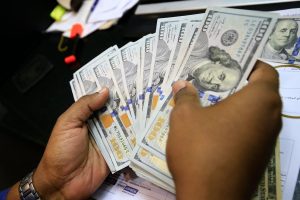
According to the recent data from the Reserve Bank of India, India’s Foreign Exchange (Forex) reserves declined by $113 million to $479.45 billion in the week to 24 April 2020 due to a fall in foreign currency assets.
Changes in forex reserves holdings.
- The foreign currency assets (FCAs) decreased by $321 million to $441.56 billion.
- Gold reserves rose by $221 million to $32.901 billion.
- The special drawing rights with the International Monetary Fund (IMF) fell by $6 million to $1.42 billion.
- The country’s reserve position with the IMF also was down by $8 million to $3.57 billion.
- Earlier, the reserve had touched a life-time high of $487.23 billion in the week ended by 6 March 2020.
- During 2019-20, the country’s foreign exchange reserves rose by almost $62 billion.
Foreign Exchange Reserves
- Foreign exchange reserves are assets held on reserve by a central bank in foreign currencies, which can include bonds, treasury bills and other government securities.
- It needs to be noted that most foreign exchange reserves are held in U.S. dollars.
- These assets serve many purposes but are most significantly held to ensure that the central bank has backup funds if the national currency rapidly devalues or becomes altogether insolvent.
5.Chakma and Hajong communities:
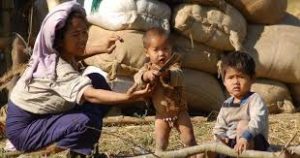
The Ministry of Development of the North Eastern Region (DoNER) has directed the Arunachal Pradesh government to include the Chakma and Hajong communities in the COVID-19 relief program.
- The Chakmas and Hajongs are ethnic people. Chakmas are predominantly Buddhists; Hajongs are Hindus.
- They were inhabitants of the Chittagong Hill Tracts of erstwhile East Pakistan (now Bangladesh) who migrated to India due to –
- Submergence of their land by the Kaptai dam on the Karnaphuli River in the 1960s.
- religious persecution they faced in East Pakistan as they were non-Muslims.
- The Indian government set up relief camps in Arunachal Pradesh and a majority of them continue to live there even after 50 years.
- An estimated 1 lakh Chakma and Hajong refugees are staying in India.
- When they came in 1964, there were about 15,000 Chakmas and about 2,000 Hajongs.
6.Demo-2 Mission:

(NASA) and SpaceX is all set for the Demo-2 mission which is scheduled for 27th May 2020 from the Kennedy Space Center in Cape Canaveral, Florida, USA.
- Demo-2 Mission will send astronauts to the International Space Station (ISS).
- Under the Mission, astronauts Robert Behnken and Douglas Hurley will dock with ISS and then remain there for between one to four months, depending on the time of the next mission.
- It is a part of NASA’s Commercial Crew Program, which is a partnership to develop and fly human space transportation systems.
- SpaceX spacecraft named Crew Dragon will be used to take them into space.
- It will be only the fifth class of US spacecraft to take human beings into orbit, after the Mercury, Gemini, Apollo, and Space Shuttle programs.
- It is a high priority mission for the US which is clear by the fact that the mission is being carried out amidst the Covid-19 pandemic.
- The mission is a major milestone for SpaceX, which is a private company founded by Elon Musk, who is the founder of Tesla.
- It has established itself as the leader in the private space sector mainly due to its reusable rocket, the Falcon 9.
7.One Nation-One Ration Card scheme:
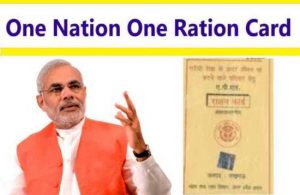
Five more States join ration card portability.
- Bihar, Punjab, UP, Himachal, and Daman and Diu have been integrated with the ‘one nation, one ration card’ scheme.
- About 60 crore beneficiaries from 17 states and UTs can benefit from the ration card portability and they can purchase the subsidized foodgrains using the existing ration cards.
About the scheme:
- One Nation One Ration Card (RC) will ensure all beneficiaries especially migrants can access PDS across the nation from any PDS shop of their own choice.
- Benefits: no poor person is deprived of getting subsidized foodgrains under the food security scheme when they shift from one place to another. It also aims to remove the chance of anyone holding more than one ration card to avail benefits from different states.
- This will provide freedom to the beneficiaries as they will not be tied to anyone PDS shop and reduce their dependence on shop owners and curtail instances of corruption.
- A standard format for the ration card has been prepared after taking into account the format used by different states.
- For national portability, the state governments have been asked to issue the ration card in the bi-lingual format, wherein besides the local language, the other language could be Hindi or English.
- The states have also been told to have a 10-digit standard ration card number, wherein the first two digits will be state code and the next two digits will be running ration card numbers.
- Besides this, a set of other two digits will be appended with ration card numbers to create unique member IDs for each member of the household in a ration card.
8.Bengaluru Bannerghatta Biological Park:

Bengaluru’s Bannerghatta Biological Park (BBBP), Karnataka has come out with the Animal Adoption Programme to conserve wildlife and allow people to adopt animals at the zoo during the lockdown period.
- The program provides an opportunity to get involved with the feeding and veterinary care expenses for zoo animals with a provision for Income Tax rebate under 80G.
- The BBBP has released a list of animals that can be adopted: King cobra, Indian rock python, Blackbuck, Sambar, Emu, Golden jackal, Indian leopard, Sloth bear, Hippopotamus, Bengal tiger, Giraffe, etc.
- In 2004, BBBP was carved out of the Bannerghatta National Park (BNP) and brought under the Zoo Authority of Karnataka (ZAK).
- BNP was declared a national park in 1974.
- BBBP has four divisions: the zoo, the safari, the butterfly park, and the rescue centre.
- It is one of the few places in the world where wilderness is preserved so close to a big city.
- The valley of Champakadhama hills is inside the park.
9.Central Vista:
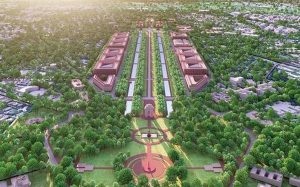
On May 2, 2020, the Expert Appraisal Committee cleared the proposal to the new Parliament at Rs 922 crores. The Central Vista committee has also approved the new plan.
- The case on minimized tree cutting and its related environmental concerns is still pending before the Supreme court.
- However, the apex court had refused to stay the Central Vista Redevelopment project recently.
- The Central Public Works Department (CPWD), amidst the COVID-19 crisis, is supporting the project.
- According to CPWD, the Parliament has constructed 93 years ago, and building a new building is of utmost importance.
Central Vista Redevelopment Project
- The project aims to build a triangular parliament building. It will revamp the 3-km long Raj Path from Rashtrapati Bhavan to India Gate.
Central Vista:
- The Central Vista of New Delhi houses Parliament House, Rashtrapati Bhavan, India Gate, North and South Block, and National Archives.
- The Parliament House was designed by Lutyens and Baker.
- The Rashtrapati Bhavan was designed by Edwin Lutyens and the secretariat that includes both north and south block was designed by Herbert Baker.
- Many historians are concerned that the project will demolish historical buildings
Other important current affairs:’
1. Kisan Sabha App developed by CSIR-Central Road Research Institute (CSIR-CRRI), New Delhi to connect farmers to supply chain and freight transportation management system was launched.
- The portal connects the farmers, transporters, Service providers (like pesticides/ fertilizer/ dealers, cold store and warehouse owner), mandi dealers, customers (like big retail outlets, online stores, institutional buyers), and other related entities for a timely and effective solution.
- The portal acts as a single stop for every entity related to agriculture, be they a farmer who needs better price for the crops or mandi dealer who wants to connect to more farmers or truckers who invariably go empty from the mandis.
- Kisan Sabha has 6 major modules taking care of Farmers/Mandi Dealers/Transporters/Mandi Board Members/ Service Providers/Consumers.
2. Recently, China has started testing its official digital currency which is unofficially called “Digital Currency Electronic Payment, DC/EP”.
- The digital currency of China has not been officially released but internal pilot tests are being carried out in four cities of China.
- China is expected to officially make the sovereign digital currency available to the public later in 2020.
- It could be considered the world’s first Central Bank Digital Currency (CBDC) if it is officially issued by state bank People’s Bank of China.
- The total size of China’s digital currency could reach one trillion yuan ($140 billion), equivalent to about one-eighth of China’s cash.
- Digital currency is a payment method that exists only in electronic form and is not tangible.
Digital currency can be transferred between entities or users with the help of technology like computers, smartphones, and the internet.
3.Thrissur Pooram:
- For the first time since its inception, Thrissur Pooram will be observed with rituals within the temple premises with just a few participants. This was done in the wake of the lockdown to prevent the spread of Covid-19.
- Known as the festival of festivals, Thrissur Pooram has a tradition of more than 200 years.
- This spectacular event was started by Sakthan Thampuran, the erstwhile ruler of Kochi.
- Held on the Moolam asterism in the Malayalam month of Medam (April-May), festival related events take place at the Vadakkumnathan temple situated in the heart of Thrissur town and the adjoining Thekkinkadu ground.
- The pooram festival mainly happens between two groups representing the geographic divisions of Paramekkavu and Thiruvambadi.
- They will compete in their respective presentations of richly caparisoned elephants, traditional orchestra called panchavadyam, the swift and rhythmic changing of brightly colored and sequined parasols called kudamattom and the dazzling fireworks in the early morning hours are the festival highlights.
4. Rebate of State Levies (ROSL) Scheme:
- Garment and made-up exporters who have Rebate of State Levies (ROSL) Scheme arrears will receive it in the form of scrips, according to a Department of Revenue communication.
- The ROSL Scheme, which reimburses the State levies that garment and made-up exports incurred, was discontinued on March 7 last year and replaced with the Rebate of State and Central Taxes and Levies scheme.
- The Cotton Textiles Export Promotion Council has welcomed the move while pointing out that exporters were in need of funds now and that the scrips would provide relief.
- They can use it for imports too, if needed, according to the Council.
5. Maharashtra and Gujarat celebrated their statehood day on 1st May 2020. On the occasion, the Prime Minister and other leaders praised the contribution made by the two states to the development of the country.
- On May 1st, 1960, the bilingual state of Bombay was divided into two separate states by the Bombay Reorganisation Act, 1960: Maharashtra for Marathi speaking people and Gujarat for Gujarati speaking people.
Gujarat was established as the 15th state of the Indian Union.
6. Professor Shobhana Narasimhan from the Theoretical Sciences Unit (TSU) at the Jawaharlal Nehru Centre for Advanced Scientific Research (JNCASR), an autonomous institute under the DST, has been elected as an International Honorary Member to the American Academy of Arts and Sciences.
- Prof Narasimhan heads the Computational Nanoscience group at JNCASR.
- She became a Fellow of the National Academy of Sciences, India in 2011, and also received the Stree Shakti Samman Science Award in 2010 and the Kalpana Chawla Woman Scientist Award of the Government of Karnataka in 2010.
- The American Academy of Arts and Sciences honors scholars and leaders who have distinguished themselves in the sciences, arts, humanities, and public life.
7.International Astronomy Day:
- Every year, International Astronomy Day is celebrated twice a year. Once on September 26 and other on May 2. On this day, astronomical institutions, planetariums, museums organize fun-filled activities and spread awareness about the world of astronomy.
- The first International Astronomy Day was celebrated in 1973.
- It was started by the then president of the Astronomical Association of Northern California.
- He aimed at setting up telescope points in different urban locations.
- Initially, the celebrations began in the United States and later it spread to other parts of the world.
- The International Year of Astronomy was celebrated in 2009.
- It was marked in 2009 to celebrate the 400th anniversary of observations of Galileo and also Kepler’s findings in the 17th century.
- The year was coordinated by the International Astronomical Union.
- In 1609, Galileo for the first time found craters and mountains on the moon that changes the perception of space.
8.May 2: World Tuna Day:
- Every year, World Tuna Day is observed by the United Nations to spread the importance of conservation of the Tuna Fish species.
- The tuna and tuna-like species are economically important for both developing and developed countries.
- The United Nations passed a resolution in 2016 and the world Tuna Day is being observed since 2017. The day is marked to prevent tuna fish stocks from crashing.
9. Around 200 Mandis was added to the E-NAM platform. The mandis were from 7 different states.
- They were joined through a video conference held by the Union Minister of Agriculture Shri Narendra Singh Tomar.
- The mandis added were from the states of Odisha, Andhra Pradesh, Gujarat, Rajasthan, Uttar Pradesh, Karnataka, and Uttar Pradesh.
- These addends have brought the number of E-Nam mandis in the country to 785.




